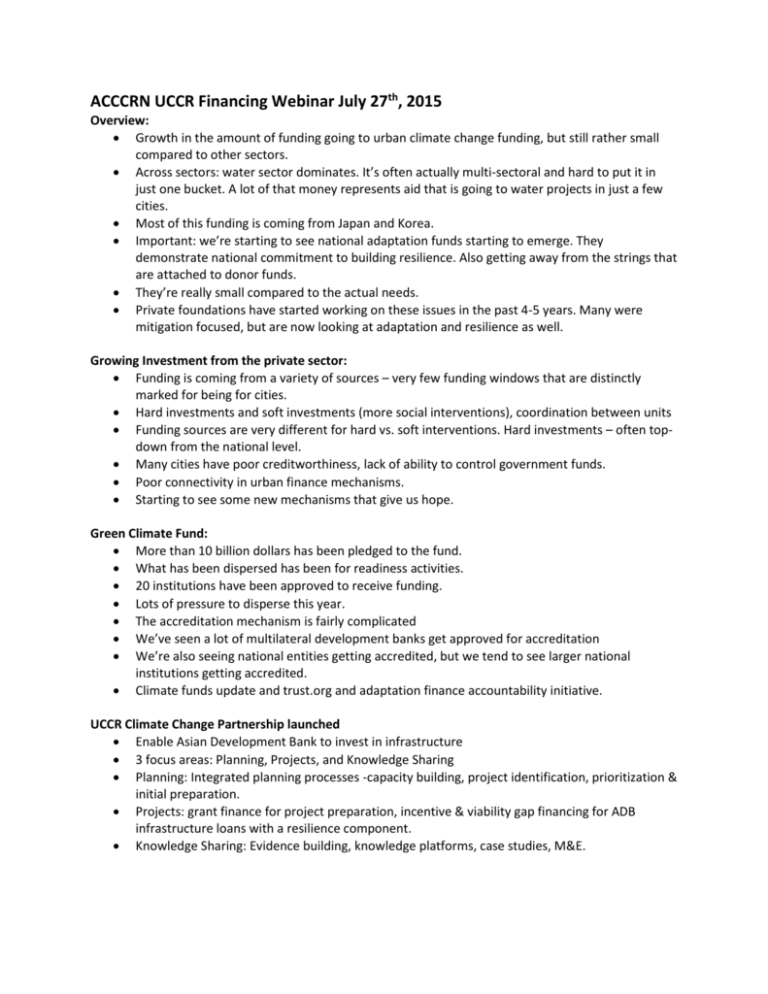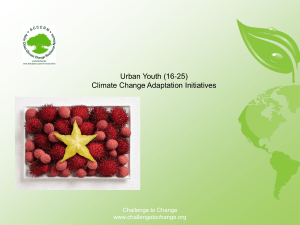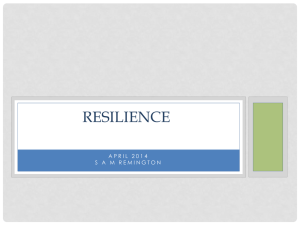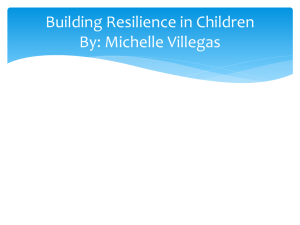urban climate
advertisement

ACCCRN UCCR Financing Webinar July 27th, 2015 Overview: Growth in the amount of funding going to urban climate change funding, but still rather small compared to other sectors. Across sectors: water sector dominates. It’s often actually multi-sectoral and hard to put it in just one bucket. A lot of that money represents aid that is going to water projects in just a few cities. Most of this funding is coming from Japan and Korea. Important: we’re starting to see national adaptation funds starting to emerge. They demonstrate national commitment to building resilience. Also getting away from the strings that are attached to donor funds. They’re really small compared to the actual needs. Private foundations have started working on these issues in the past 4-5 years. Many were mitigation focused, but are now looking at adaptation and resilience as well. Growing Investment from the private sector: Funding is coming from a variety of sources – very few funding windows that are distinctly marked for being for cities. Hard investments and soft investments (more social interventions), coordination between units Funding sources are very different for hard vs. soft interventions. Hard investments – often topdown from the national level. Many cities have poor creditworthiness, lack of ability to control government funds. Poor connectivity in urban finance mechanisms. Starting to see some new mechanisms that give us hope. Green Climate Fund: More than 10 billion dollars has been pledged to the fund. What has been dispersed has been for readiness activities. 20 institutions have been approved to receive funding. Lots of pressure to disperse this year. The accreditation mechanism is fairly complicated We’ve seen a lot of multilateral development banks get approved for accreditation We’re also seeing national entities getting accredited, but we tend to see larger national institutions getting accredited. Climate funds update and trust.org and adaptation finance accountability initiative. UCCR Climate Change Partnership launched Enable Asian Development Bank to invest in infrastructure 3 focus areas: Planning, Projects, and Knowledge Sharing Planning: Integrated planning processes -capacity building, project identification, prioritization & initial preparation. Projects: grant finance for project preparation, incentive & viability gap financing for ADB infrastructure loans with a resilience component. Knowledge Sharing: Evidence building, knowledge platforms, case studies, M&E. CDIA (Cities Development Initiative for Asia) Help cities take infrastructure development plans and work towards getting funding Strong focus on climate change Number of tools and mechanisms to provide support (Slide 15) Focusing on how to make the finance system “connect up” World Bank Credit Worthiness Partnership: Meant to help cities become credit worthy Credit Worthiness Academies (select cities work with for a year or more to develop legal and policy frameworks), engaging private sector investments Intensive program - a lot of time and resources going into this World Bank is looking to ground some of this work in Asia (potential ACCCRN cities) 100 Resilient Cities Final call for applications for the final batch of resilient cities Final 33 or so cities Local governments have to be the ones to apply Better chances of being selected if many stakeholders are involved Benefits: financial and logistical support, expert support, access to a network of service providers, and access to global network Global Resilience Partnership Aiming to innovate on resilience and reduce number of humanitarian missions that are needed for certain regions Goal: Develop new mechanisms to help vulnerable groups become more resilient. This program is not distinctly urban. IDRC of Canada Open call for proposals – deadline December 18th Looking to do research on hard and soft measures – they consider a lot of the more social elements of building resilience. Additional Research Programs: CARIAA (Collaborative Adaptation Research Initiative in Africa and Asia IRIACC (International Research Initiative on Adaptation to Climate Change IIED (International Institute for Environment and Development Wellcome trust (Does a lot of work in the health space) USAID ADAPT Asia-Pacific Building capacity to access adaptation funds Programs and initiatives, knowledge sharing platform, annual forum, capacity building program, workshops, project preparation and finance, and other knowledge tools. Conclusion: Increasing amount of funding for resilience Mechanisms for accessing them are quite complex Public and private funding sources Fundamental challenges with traditional funding mechanisms Need more innovation to create more accessible mechanisms A need to continue this conversation online Conversation: Really encourage everyone to continue the conversation on ACCCRN.net How can we best influence donors to take into account soft funding? We can remind donors of the social side of this issue. Part of building resilience is about capacity building and relationship building. We won’t be able to shift the lion’s share of funding to soft interventions, but we can start to influence how that infrastructure is implemented and surrounded by other soft/social interventions. We need to generate an evidence base. We have a good platform through ACCCRN to do this. We need to point out numbers about losses averted. Showing that engaging associations and doing small upgrades to housing has had a huge impact. More community connections and mutual aid. That case may be made with country representatives of donor agencies – the bilaterals are perhaps better positioned to listen to this message. Put together a business case regarding what can be achieved with some of these softer interventions. At CDIA, cities can actually apply for CapDev measures as part of the pre-feasibility study (PFS) on "hard" measures; we also look at institutional mechanisms in those studies. Work shadowing and job training for city officials. It would be good for cities to incorporate data on their budgets regarding resilience. Showing how much money would be needed for those action plans, so funders can come in and see what bankable projects they would be interested in. Credit Worthiness: Ratri Sutarto: Can Cristina explain more about the World Bank credit worthy scheme? Is this a project for capacity building only for cities to be able to receive funding or is there project funding available as well? Funding for capacity building at the local level government. They’re planning on doing trainings in a few different countries with a few select cities. Mark Harvey: DFID has been funding some good research by BBC Media Action on the impact of its investments in resilience support programs in Bangladesh and in urban areas. One way of bridging hard and soft investments is to position data and communication as part of the critical infrastructure that cities need to develop for resilience. Information infrastructure – look at needs for any infrastructure project. Look at who has a say in infrastructure development. Arguments around communication systems and challenges. Lots of work has been undertaken regarding the quality of communication in cities. It’s just as important as hard infrastructure. We need to back up conceptual models with data. Cristina: Great point. Often our definitions of what makes a resilient city include something about communication, but doesn’t go into much depth about who can communicate, who has access to information, who doesn’t communicate. Mark: Media organizations have had to make the case of the value of investing in the communications sphere. Jim: Where you have good governance you often have good information flows. The poor and the vulnerable that will be impacted negatively by projects will never know what hit them. Cities often don’t have financial autonomy Istanbul – big crackdown on press freedom. There is great complexity in the kinds of environments we’re operating in. Pak Purnomo: Credit worthiness was not easy to come by, we were fortunate to be able to but long process with approval by MOF, just a few city in Indonesia less than 5 cities. We cooperated with ministry of finance and the World Bank. Funding from the private sector Challenging to get the private sector engaged Corporates can contribute resources, often in the form of CSR Engage them in understanding their own climate risks The challenge is getting corporations to engage beyond their footprint There are many examples of the private sector being engaged especially if they get some benefit themselves. It’s important to build these relationships at the local level and small and medium-sized enterprises. Leveraging private sector finance is another question – we need a good evidence base. Social impact bonds that pay the upfront costs for things that pay dividends over time We need data that shows that upfront investments can have a huge impact later. Many teams are interested in looking at shared value for resilience outcomes. Denia: Direct Access mechanism – clarify the difference One set of procedures for accreditation through Green Climate Fund They have to go through the same procedures Open to all kinds of organizations Is there a proportion that’s available for direct access? No. Tracking mechanism finance down to the local level – meant to add transparency and evaluate the effectiveness. Important initiative to keep an eye on. Understanding how the money works, where it goes, and what it’s doing is critical. Do you have some information on donors that are interested in funding social enterprise on resilience? Don’t have a ready answer. Suggest looking at Acumen fund and Root capital. Will do some thinking and come back with ideas. Milago Fund – early stage social entrepreneurs. DFID has a big focus on this as well. Is there any funding for peri-urban zones? I don’t think any of the issues exclude this zone. However, not aware of anyone that’s specifically focusing on these zones. Thanks everyone! Let’s continue this discussion online at ACCCRN.net







